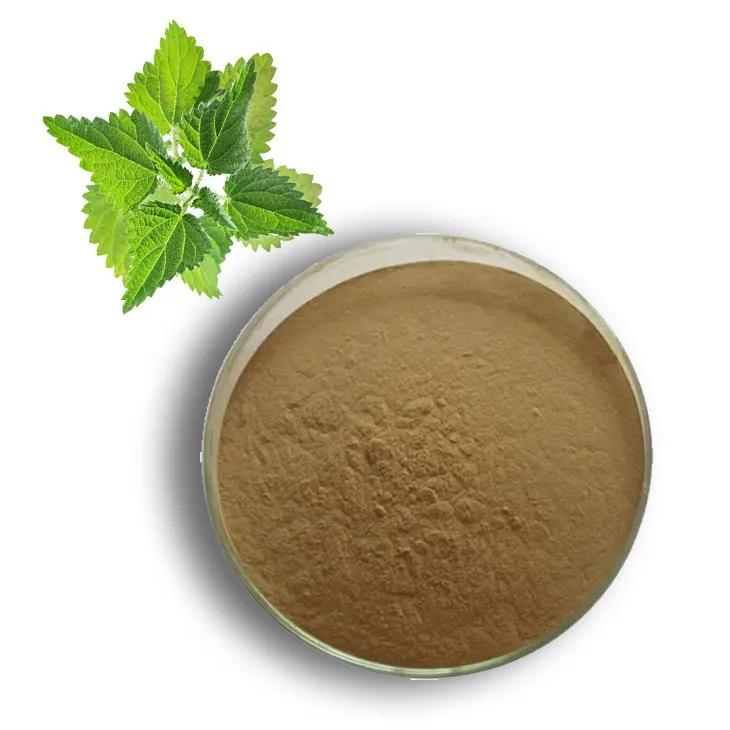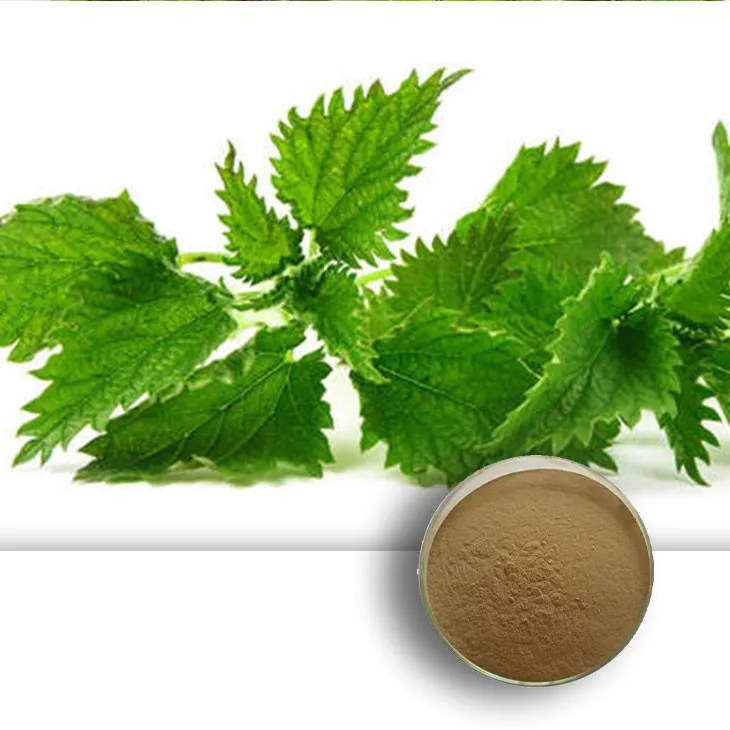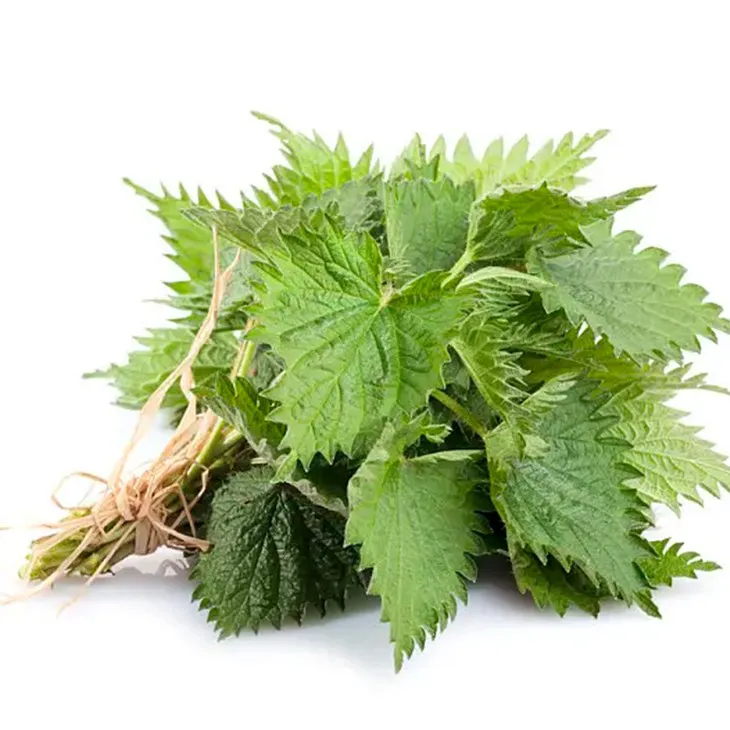- 0086-571-85302990
- sales@greenskybio.com
Nettle Leaf Extract: From Leaves to Extraction.
2024-11-13

1. Introduction to Nettle Leaves
Nettle leaves are an important natural resource that has been used for centuries in various applications. Nettle plants (Urtica dioica) are known for their characteristic stinging hairs, which can cause irritation upon contact. However, once properly processed, their leaves offer a wealth of benefits.
1.1 Structure of Nettle Leaves
Nettle leaves are typically oval - shaped with a serrated edge. They have a thin, yet sturdy, cuticle that protects the inner tissues. The leaf surface contains numerous small hairs, some of which are the stinging hairs. Beneath the cuticle, there are layers of mesophyll cells. The upper mesophyll layer is rich in chloroplasts, which are responsible for photosynthesis. The lower mesophyll layer contains more storage cells and is involved in gas exchange.
1.2 Nutrients in Nettle Leaves
Nettle leaves are a nutritional powerhouse. They are rich in vitamins such as vitamin C, which is an antioxidant that helps protect cells from damage. Vitamin K is also present in significant amounts, which is important for blood clotting. In addition to vitamins, nettle leaves contain minerals like iron, calcium, and magnesium. Iron is essential for the formation of hemoglobin in red blood cells, calcium is crucial for bone health, and magnesium is involved in many enzymatic reactions in the body. They also contain amino acids, which are the building blocks of proteins.

2. The Extraction Process
The extraction of Nettle leaf extract is a meticulous process that aims to isolate the beneficial compounds present in the leaves.
2.1 Harvesting the Nettle Leaves
The first step in the extraction process is the proper harvesting of nettle leaves. This should be done at the right time of the year, typically in the spring when the leaves are young and tender. Harvesting should be carried out carefully to avoid the stinging hairs. Gloves should be worn during the process. Once harvested, the leaves should be cleaned thoroughly to remove any dirt, debris, or insects.
2.2 Drying the Nettle Leaves
After harvesting, the nettle leaves need to be dried. Drying helps to preserve the leaves and concentrate their nutrients. There are different methods of drying, such as air - drying and using a dehydrator. Air - drying is a more natural method where the leaves are spread out in a well - ventilated area away from direct sunlight. This process may take several days. Using a dehydrator can speed up the process, usually taking a few hours. The dried leaves should be stored in a cool, dry place until further processing.
2.3 Grinding the Dried Nettle Leaves
Once the nettle leaves are dried, they need to be ground into a fine powder. This can be done using a mortar and pestle for small - scale extraction or a mechanical grinder for larger quantities. Grinding the leaves into a powder increases the surface area, which is beneficial for the extraction process as it allows for better contact with the extraction solvent.
2.4 Extraction with Solvents
There are different solvents that can be used for the extraction of Nettle leaf extract. Common solvents include ethanol, water, or a combination of both.
- Ethanol extraction: Ethanol is a good solvent for extracting many of the bioactive compounds in nettle leaves. It can dissolve compounds such as flavonoids, phenolic acids, and terpenes. In this method, the ground nettle leaf powder is soaked in ethanol for a certain period, usually several hours to a few days. The mixture is then filtered to separate the liquid extract from the solid residue.
- Water extraction: Water can also be used as a solvent. It is a more environmentally friendly option. However, water extraction may not be as effective as ethanol in extracting some of the more hydrophobic compounds. In water extraction, the ground nettle leaf powder is boiled in water for a period of time, and then the liquid is separated from the solid by filtration.
- Combined extraction: A combination of ethanol and water can be used to take advantage of the properties of both solvents. This can result in a more comprehensive extraction of the beneficial compounds in nettle leaves.
2.5 Purification of the Extract
After the initial extraction, the resulting extract may contain impurities such as plant debris, waxes, and other unwanted substances. Purification steps are necessary to obtain a pure and effective Nettle leaf extract.
One common purification method is filtration through a fine filter, such as a filter paper or a membrane filter. This can remove larger particles. Another method is centrifugation, which can separate heavier particles from the liquid extract by spinning the sample at high speeds. Additionally, chromatography techniques can be used for more precise purification, separating different compounds based on their chemical properties.

3. Potential Benefits of Nettle Leaf Extract
Nettle leaf extract has a wide range of potential benefits, both in terms of human health and environmental sustainability.
3.1 Health Benefits
- Anti - inflammatory properties: Nettle leaf extract contains compounds such as flavonoids and phenolic acids that have been shown to have anti - inflammatory effects. These compounds can help reduce inflammation in the body, which is associated with many chronic diseases such as arthritis, heart disease, and diabetes.
- Allergy relief: Nettle leaf extract may also be beneficial for allergy sufferers. It can act as a natural anti - histamine, reducing the symptoms of allergies such as sneezing, itching, and runny nose.
- Hair and skin health: The nutrients in nettle leaf extract, such as vitamins and minerals, can promote healthy hair and skin. It can be used in hair products to strengthen hair follicles and improve hair growth. For the skin, it can help soothe irritation and improve complexion.
3.2 Environmental Sustainability Applications
- Natural pest control: Nettle leaf extract can be used as a natural pesticide. It contains compounds that are toxic to certain pests but are relatively harmless to beneficial insects and the environment. This can be an alternative to synthetic pesticides, reducing the environmental impact of pest control.
- Soil improvement: Nettle plants are known for their ability to accumulate nutrients from the soil. When nettle leaves are used to make extract, the remaining plant material can be composted and returned to the soil. This can improve soil fertility and structure.

4. Conclusion
In conclusion, nettle leaf extract is a valuable product that is obtained through a series of carefully controlled processes. From the initial harvesting of nettle leaves to the final purification of the extract, each step is crucial in ensuring the quality and effectiveness of the extract. The potential benefits of nettle leaf extract, both in terms of health and environmental applications, make it an area worthy of further study and development. With increasing interest in natural products and sustainable solutions, nettle leaf extract has the potential to play an important role in various industries.
FAQ:
What are the main nutrients in nettle leaves?
Nettle leaves are rich in various nutrients. They contain vitamins such as vitamin C, vitamin A, and some B - vitamins. Minerals like iron, calcium, magnesium, and potassium are also present. Additionally, nettle leaves have amino acids, flavonoids, and phenolic compounds which contribute to their potential health benefits.
How is the structure of nettle leaves related to the extraction process?
The structure of nettle leaves can influence the extraction process. Nettle leaves have a complex cellular structure. Their outer layer may act as a barrier during extraction. The cell walls need to be broken down effectively to release the desired compounds. For example, the presence of cuticles and cellulosic cell walls means that appropriate extraction methods, such as solvent - based extraction, need to be carefully designed to penetrate these structures and extract the valuable components.
What are the different methods of extracting nettle leaf extract?
There are several methods for extracting nettle leaf extract. One common method is solvent extraction, where solvents like ethanol or water are used. Ethanol extraction can be effective in extracting lipophilic compounds. Water extraction is often used for hydrophilic substances. Another method is supercritical fluid extraction, which uses supercritical carbon dioxide. This method has the advantage of being more environmentally friendly and can produce a purer extract. Maceration, which involves soaking the nettle leaves in a solvent for a period of time, is also a traditional extraction method.
What are the anti - inflammatory properties of nettle leaf extract?
The anti - inflammatory properties of nettle leaf extract can be attributed to several of its components. Flavonoids and phenolic compounds present in the extract have been shown to reduce inflammation. These compounds can inhibit the production of inflammatory mediators such as cytokines and prostaglandins. They may also act on immune cells to modulate the inflammatory response, thereby helping to reduce inflammation in the body.
How can nettle leaf extract contribute to environmental sustainability?
Nettle leaf extract can contribute to environmental sustainability in multiple ways. Nettles are often considered a weed in some areas, so using them for extraction can be a form of waste utilization. Additionally, if the extraction process is optimized to use more environmentally friendly solvents or methods, such as supercritical fluid extraction with carbon dioxide, it can reduce the environmental impact. The potential use of nettle leaf extract in biodegradable products or as a natural alternative to synthetic chemicals in agriculture can also promote environmental sustainability.
Related literature
- The Chemical Composition and Biological Activities of Nettle (Urtica dioica L.)"
- "Extraction Techniques for Medicinal Plants: A Review with a Focus on Nettle (Urtica dioica)"
- "Nettle Leaf Extract: Properties and Potential Applications in Health and Environment"
- ▶ Hesperidin
- ▶ citrus bioflavonoids
- ▶ plant extract
- ▶ lycopene
- ▶ Diosmin
- ▶ Grape seed extract
- ▶ Sea buckthorn Juice Powder
- ▶ Beetroot powder
- ▶ Hops Extract
- ▶ Artichoke Extract
- ▶ Reishi mushroom extract
- ▶ Astaxanthin
- ▶ Green Tea Extract
- ▶ Curcumin Extract
- ▶ Horse Chestnut Extract
- ▶ Other Problems
- ▶ Boswellia Serrata Extract
- ▶ Resveratrol Extract
- ▶ Marigold Extract
- ▶ Grape Leaf Extract
- ▶ blog3
-
High purity olive leaf extract
2024-11-13
-
Lavender oil extraction method
2024-11-13
-
100% organic virgin sea buckthorn fruit oil
2024-11-13
-
Lotus leaf extract powder factory in China
2024-11-13
-
China aged garlic extract supplier
2024-11-13
-
Deer antler extract powder manufacturer
2024-11-13
-
Saw palmetto extract vs whole herb
2024-11-13
-
Resveratrol extract
2024-11-13
-
Angelica sinensis extract
2024-11-13
-
Black Garlic Extract
2024-11-13
-
Beetroot Powder
2024-11-13
-
Mangosteen extract powder
2024-11-13
-
Plantain extract
2024-11-13
-
Curcuma Longa Extract
2024-11-13
-
Licorice Root Extract Powder
2024-11-13
-
Tongkat Ali Extract Powder
2024-11-13
-
Dan Shen Root Extract/Salvia Root Extract
2024-11-13





















